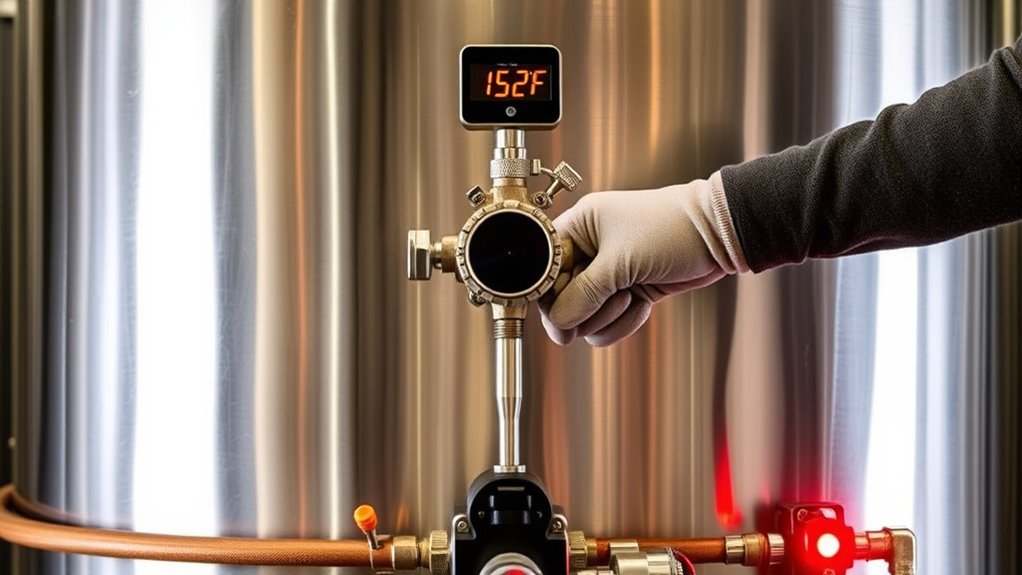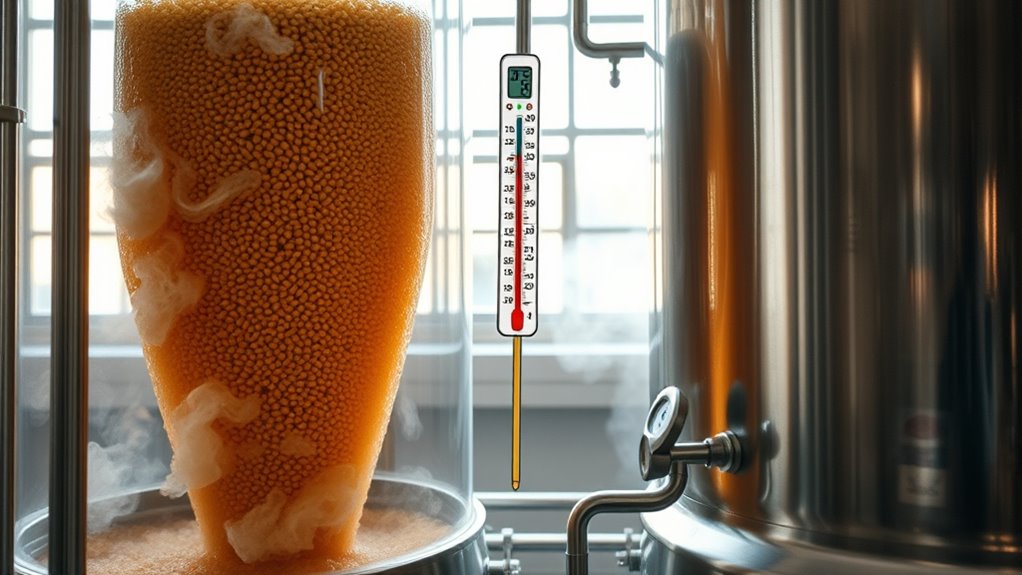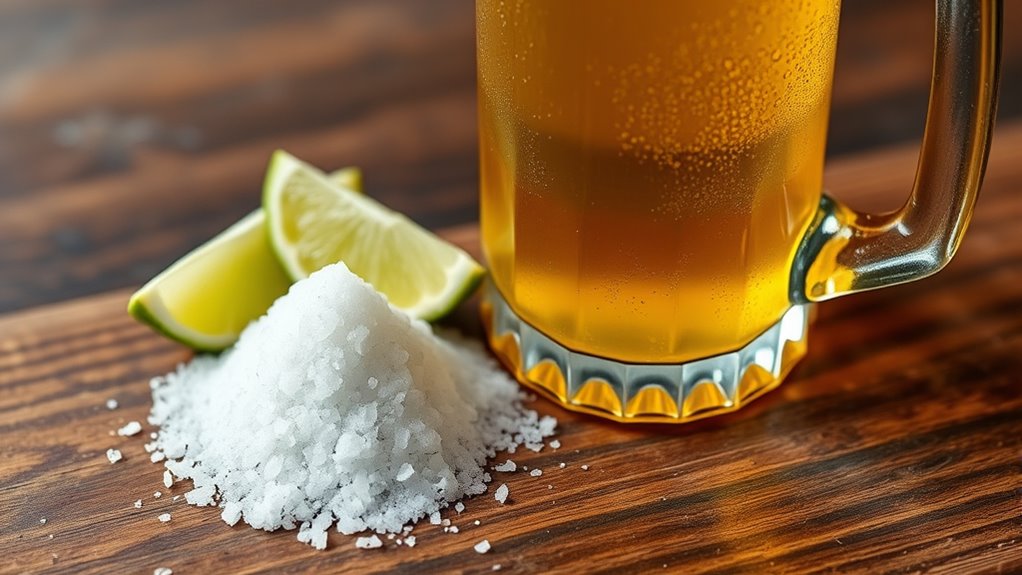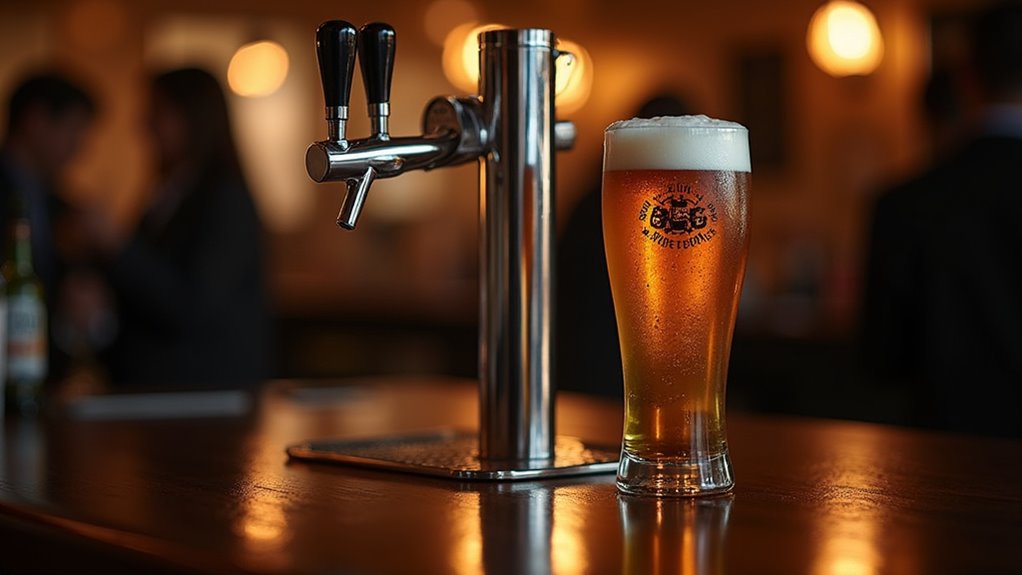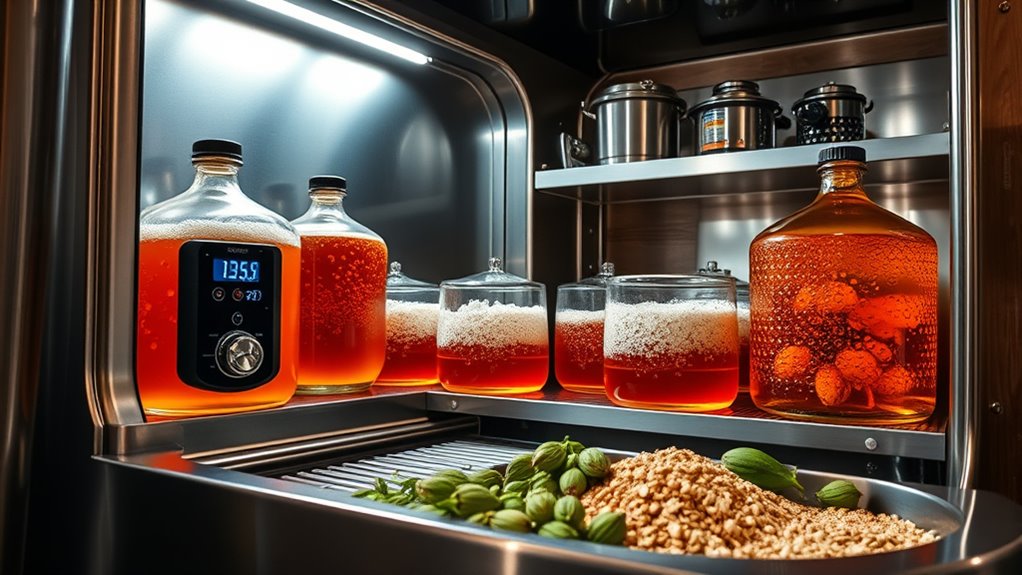To control step mashing temperatures, accurately monitor your mash’s temperature throughout the process. Start by aiming for an initial mash temperature of around 135°F, and use a good thermometer for tracking. You can adjust temperatures by adding boiling water if too low, or cold water if too high. Employ a consistent mash schedule, maintaining stability within a 1-2°F range for ideal enzyme activity. Following these steps can greatly improve your brewing quality, and there’s more to discover about mastering this technique.
At a Glance
- Start with an initial mash temperature of around 135°F and adjust as needed throughout the process.
- Use a Recirculating Mash System to maintain consistent temperature stability during the mashing process.
- Monitor mash temperature continuously with an accurate thermometer to ensure it stays within the optimal range.
- Adjust temperatures promptly by adding boiling water for lower temperatures or cold water for higher temperatures.
- Keep a brewing log to document temperature adjustments and improve future mashing techniques.
Understanding the Importance of Temperature Control
When you’re brewing beer, controlling the temperature during step mashing is vital for achieving the best results. Effective temperature control optimizes enzyme activity, important for starch conversion.
Alpha-amylase thrives between 154°F–167°F, while beta-amylase works best at 130°F–150°F. Maintaining these mash temperatures guarantees that enzymes don’t denature, preventing off-flavors and inconsistencies in your final product. Additionally, keeping the mash pH in the range of 5.2-5.6 is critical as it influences enzyme performance and overall beer quality.
Maintaining mash temperatures between 130°F–167°F is crucial for enzyme activity, ensuring a consistent and flavorful beer.
Even slight deviations can affect fermentability, altering the final gravity and alcohol content. For precision, consider using tools like BeerSmith’s Mash Adjust Tool to calculate water temperature and volume accurately. This will enhance your brewing process and guarantee a high-quality beer.
Helpful Hints
- Monitor mash temperature closely.
- Use a thermometer for accuracy.
- Adjust water volumes as needed.
Techniques for Achieving Target Mash Temperatures
Achieving target mash temperatures is essential for effective step mashing, as precise temperature control directly influences enzyme activity and starch conversion.
Start by calculating accurate water volume and temperature to guarantee your initial mash is around 135°F. Utilize a Recirculating Mash System to maintain consistent temperatures, allowing controlled increases.
If your mash temperature falls short, add small amounts of boiling water; conversely, if you overshoot, incorporate cold water. If your mash tun is heat-capable, directly heat it, turning off just before reaching your target.
Monitor temperatures closely, aiming for stability within a 1-2°F range for ideal results. Additionally, investing in high-quality mash tun products can significantly enhance your brewing experience.
Helpful Hints:
- Use a reliable thermometer.
- Adjust gradually for precision.
- Keep notes for future reference.
Monitoring and Adjusting Mash Temperature Effectively
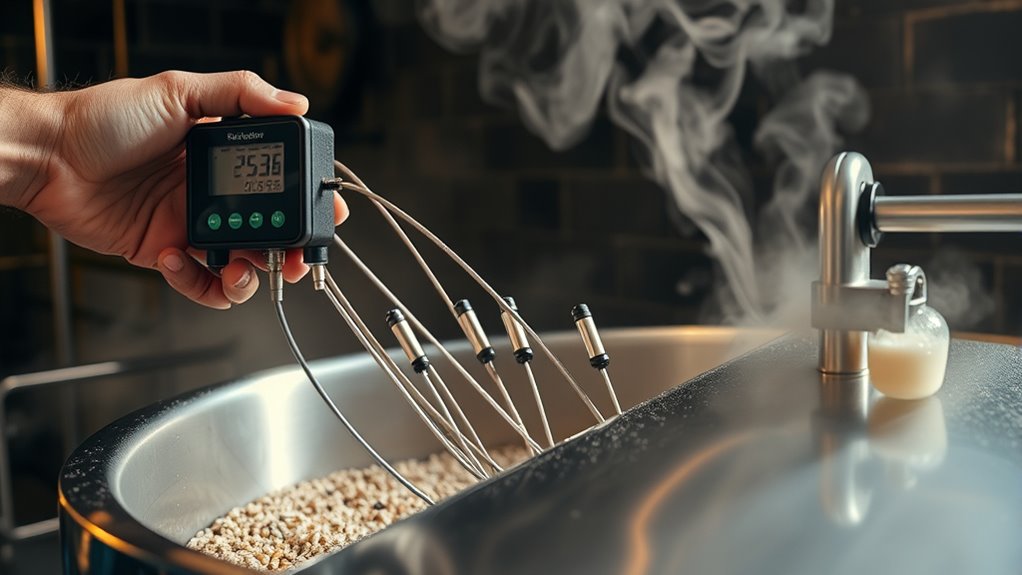
Monitoring mash temperature effectively is essential for achieving ideal sugar extraction during the step mashing process. Use an accurate thermometer to keep track of the mash temperature continuously.
Implement a mash schedule with specific temperature targets, usually starting at 135°F and ramping up to 152°F. If your mash temperature falls below the target, adjust temperatures by adding small amounts of boiling water. Conversely, use cold water if the temperature overshoots.
A Recirculating Mash System can help maintain consistent temperatures by circulating heated wort. Consider brewing software like BeerSmith for precise calculations and adjustments throughout the mashing process. Maintaining consistent brew kettle temperature is crucial for achieving the desired balance of flavors and sugars in your beer.
The Role of Enzymes in Step Mashing
Understanding the role of enzymes in step mashing is vital for producing high-quality beer. Two key enzymes, alpha amylase and beta amylase, work at different temperature ranges.
Beta amylase thrives between 130°F and 150°F, breaking down starches into maltose for a lighter, fermentable wort. Conversely, alpha amylase operates best from 154°F to 167°F, creating dextrins that enhance body and mouthfeel.
Aim for an ideal mash temperature of around 153°F (67°C) for a balanced medium-bodied beer. Remember, exceeding 167°F can deactivate alpha amylase, limiting sugar conversion, so precise temperature control is essential for desired beer characteristics.
Helpful Hints:
- Monitor mash temperatures consistently.
- Adjust your mash schedule based on enzyme activity.
Common Mashing Mishaps and Solutions
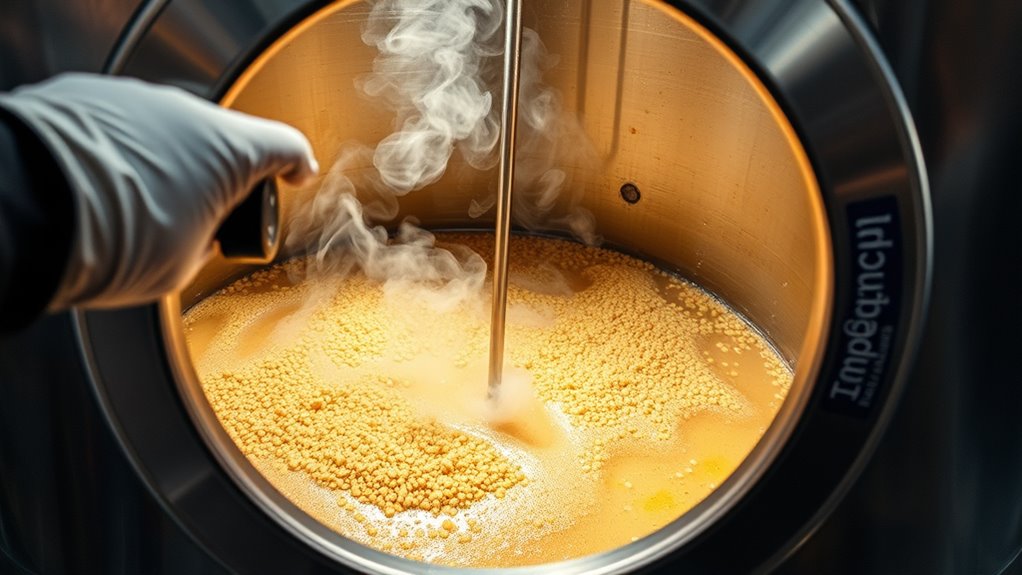
Mashing can be a delicate process, and if you’re not careful, you may encounter several common mishaps that can affect your beer’s quality.
Here are some solutions to take into account:
- Incorrect Mash Temperature: If your mash temperature is too low, add small amounts of boiling water to raise it. Conversely, if it’s too high, incorporate cold water or ice to cool it down.
- Timing: Make quick adjustments for significant deviations, while minor tweaks can often wait 5-10 minutes.
- Seek Help: Engage with brewing communities for tips on troubleshooting and improving your brewing techniques.
Enhancing Your Brewing Process Through Precision
When you aim for quality in your brewing process, precision becomes key. Start your step mash at 135°F, gradually increasing to 140°F for a 30 to 45-minute beta-amylase rest. This optimizes enzyme activity for effective starch conversion.
Maintain a liquid-to-grist ratio of 1.25 to 1.5 quarts per pound to guarantee even heat distribution. Consider using a Recirculating Mash System (RMS) for consistent temperatures, avoiding hot spots.
Ensure a liquid-to-grist ratio of 1.25 to 1.5 quarts per pound for optimal heat distribution and consider a Recirculating Mash System for temperature consistency.
Monitor your mash temperature closely; even a few degrees off can affect your beer’s body. Use direct heating in a metal mash tun, stirring constantly to prevent scorching. Additionally, effective temperature management plays a crucial role in ensuring optimal fermentation performance.
Helpful Hints:
- Always calibrate your thermometer.
- Keep a brewing log for future reference.
- Experiment with different mash temperatures for flavor variations.
